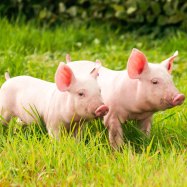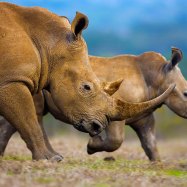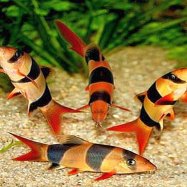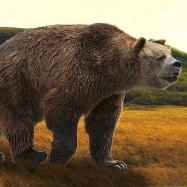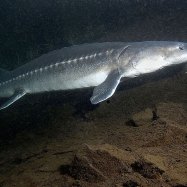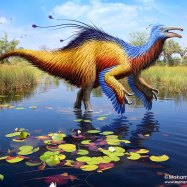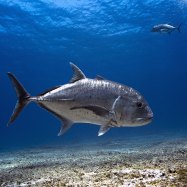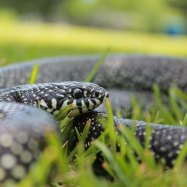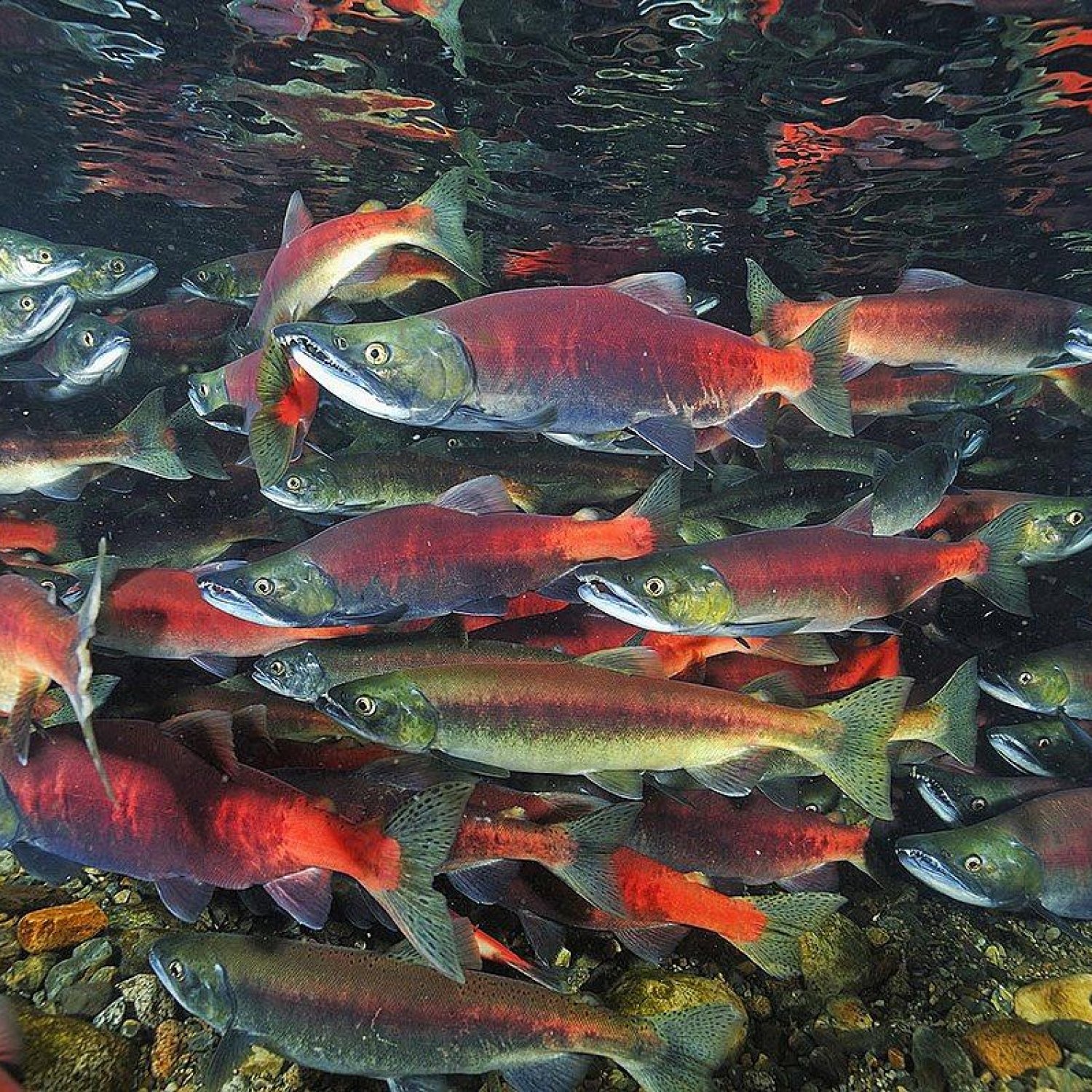
Kokanee Salmon
10-20 inches
Kokanee salmon, a type of freshwater fish, is known for its streamlined body shape and can grow 10-20 inches in length. They are found in rivers and lakes, belonging to the Salmonidae family. These salmon are a popular sport fish and are important for their contribution to the ecosystem. Catch one on your next fishing trip! #KokaneeSalmon #SalmonFamily #FishingFun
Animal Details Summary:
Common Name: Kokanee Salmon
Kingdom: Animalia
Habitat: Freshwater
Kokanee Salmon: The Little-Known Beauty of North America's Freshwaters
The world is filled with stunning creatures, from colorful birds to majestic big cats. But sometimes, the most beautiful animals are the ones we least expect. Take the Kokanee Salmon, for example. Often overshadowed by its larger relatives like the Chinook and Sockeye Salmon, this freshwater fish is a secret gem of North America's rivers and lakes Kokanee Salmon.But don't let its smaller size deceive you. The Kokanee Salmon, also known by its scientific name Oncorhynchus nerka, is a unique and fascinating species that deserves a closer look. In this article, we'll dive into the world of the Kokanee Salmon, exploring its habitat, feeding habits, and other noteworthy characteristics.
A Little About Its Background
The Kokanee Salmon is a member of the genus Oncorhynchus, which translates to "hooked nose." This refers to the distinctive curve on the snout of these fish, which is more prominent in males during spawning season. They are closely related to the Sockeye Salmon, with some scientists considering them to be the landlocked version of the Sockeye Salmon.These stunning fish can be found in North America, with their native range covering the western United States and Canada. However, due to the popularity of sport fishing, they have been introduced to other areas worldwide, such as South America and New Zealand.
The Habitat of the Kokanee Salmon
As mentioned earlier, the Kokanee Salmon is a freshwater species Kissing Gourami. They can be found in a variety of bodies of water, from large rivers to small lakes. However, they prefer deeper, cooler waters and are often found in the upper parts of these water systems.One of the most noteworthy things about these fish is their ability to survive in landlocked environments. Unlike other salmon species, which migrate to the ocean and return to freshwater to spawn, the Kokanee Salmon spends its entire life in freshwater. This is why they are often called "landlocked sockeye" and "freshwater sockeye."
Their natural habitat also plays a crucial role in their survival and unique characteristics. The cool, clear waters of North America's rivers and lakes provide perfect conditions for the Kokanee Salmon to thrive.
The Feeding Habits of the Kokanee Salmon
Kokanee Salmon are classified as omnivores, meaning they consume both plant and animal matter. In their natural habitat, they feed on plankton, insects, and small fish. However, when they are introduced to non-native environments, their diet may vary.They have a specialized feeding method called "filter feeding." This means they use their gill rakers, which are thin, comb-like structures on their gills, to filter out small particles of food from the water.
This method is especially important for their survival, as they rely on it to obtain the nutrients they need to grow and reproduce.
Geographical Distribution of the Kokanee Salmon
The Kokanee Salmon is native to North America, specifically the western United States and Canada. They are also found in parts of British Columbia and Alaska.However, as mentioned earlier, they have been introduced to other areas worldwide. This includes South America, where they are considered a popular game fish, and New Zealand, where they were introduced in the late 1800s as a food source.
Despite being landlocked, the Kokanee Salmon is not considered a threatened or endangered species. However, their populations have declined in some areas due to habitat destruction, overfishing, and competition with other non-native fish species.
Appearance and Body Characteristics
The Kokanee Salmon may not be as big as its relatives, but it certainly has its unique and stunning appearance. These fish typically range from 10-20 inches in length, with some reaching up to 24 inches in rare cases. They have a streamlined body shape, which makes them excellent swimmers.One of their most striking features is their blue-green to silver coloration. When they are spawning, males develop a greenish hue on their heads and upper bodies, while females remain silver. This color change is thought to attract a mate during spawning season.
Another interesting characteristic of the Kokanee Salmon is their lack of scales. Instead, they have a smooth, slippery skin, which is thought to help them move through the water with ease.
The Spawning Season
Just like their relatives, Kokanee Salmon also undergo an anadromous migration during their spawning season. This means they move from their freshwater habitat to the ocean to reproduce.Spawning season typically takes place from late summer to early fall. Around this time, the males develop their distinctive humped backs and dark red bodies, which are important for attracting a female mate.
After finding a suitable location, the male will dig a nest, called a "redd," in the gravel bed of the river or lake. The female then lays her eggs in the redd, and the male fertilizes them. The female then covers the eggs with gravel, and the male defends the redd from predators.
Once the eggs hatch, the fry (baby salmon) will stay in the river or lake for about a year before heading out to the ocean or staying in the freshwater environment for the duration of their life.
Kokanee Salmon and Humans
One of the main reasons the Kokanee Salmon is not as well-known as its relatives is its limited commercial value. Unlike other salmon species, which are sought after for their tasty flesh, the Kokanee Salmon is mainly targeted by sport fishermen.Thanks to their hardy nature and willingness to bite bait, they are a popular fish for recreational fishing. In areas where the Kokanee Salmon has been introduced, fish and wildlife agencies often manage their populations to provide anglers with a steady supply of fish.
In some areas, the Kokanee Salmon is also an important cultural symbol for native communities. For example, the Okanagan Nation in Canada considers this species to be a sacred food source and includes it in their traditional teachings and ceremonies.
In Conclusion
The Kokanee Salmon may not be as well-known as its relatives, but it certainly deserves recognition for its unique characteristics and importance in its natural environment. From its vibrant coloration to its specialized feeding habits, this freshwater fish is a true gem of North America's rivers and lakes.Thanks to conservation efforts, the Kokanee Salmon populations are stable, allowing us to continue admiring and learning about these beautiful creatures. So, next time you're out fishing in a North American river or lake, keep an eye out for this little-known beauty.

Kokanee Salmon
Animal Details Kokanee Salmon - Scientific Name: Oncorhynchus nerka
- Category: Animals K
- Scientific Name: Oncorhynchus nerka
- Common Name: Kokanee Salmon
- Kingdom: Animalia
- Phylum: Chordata
- Class: Actinopterygii
- Order: Salmoniformes
- Family: Salmonidae
- Habitat: Freshwater
- Feeding Method: Omnivore
- Geographical Distribution: North America
- Country of Origin: United States and Canada
- Location: Rivers and lakes
- Animal Coloration: Blue-green to silver
- Body Shape: Streamlined
- Length: 10-20 inches
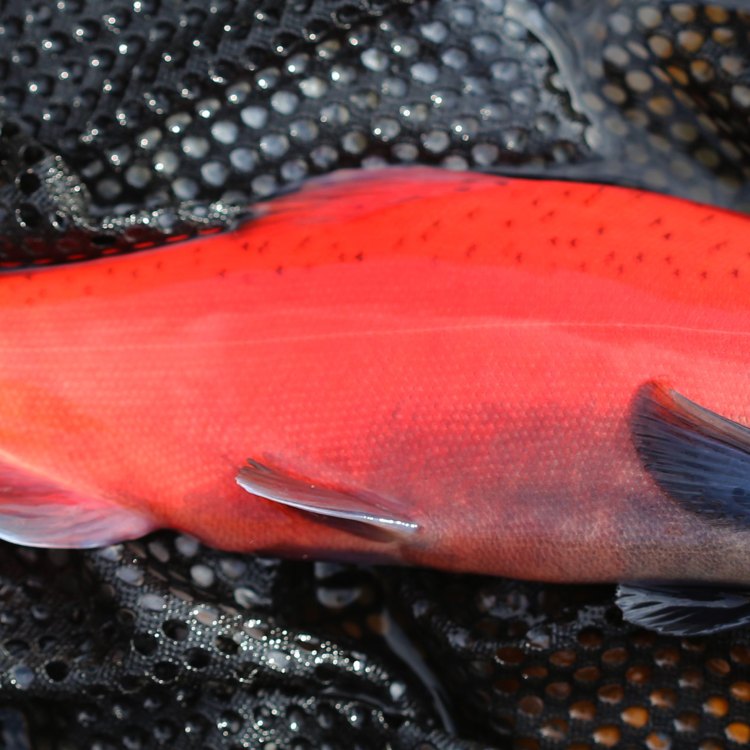
Kokanee Salmon
- Adult Size: 10-20 inches
- Average Lifespan: 3-5 years
- Reproduction: Anadromous
- Reproductive Behavior: Spawning migration
- Sound or Call: No
- Migration Pattern: Yes
- Social Groups: Solitary
- Behavior: Active during the day
- Threats: Habitat degradation, predation, fishing
- Conservation Status: Least Concern
- Impact on Ecosystem: Important prey for larger fish and birds
- Human Use: Commercial and recreational fishing
- Distinctive Features: Red coloration during spawning
- Interesting Facts: Kokanee Salmon are landlocked sockeye salmon
- Predator: Birds, larger fish
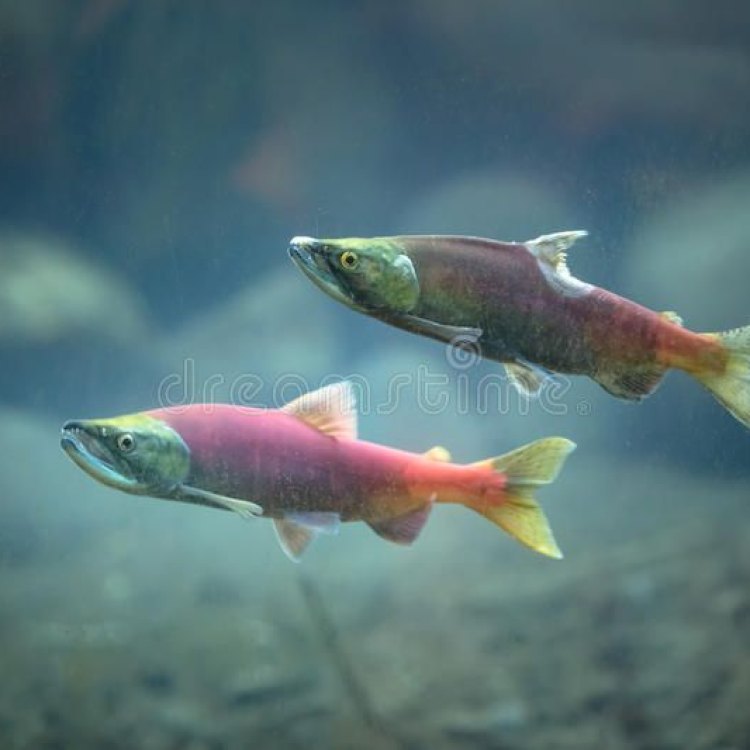
Oncorhynchus nerka
The Fascinating World of Kokanee Salmon: Anadromous Fish with a Landlocked Twist
In the world of salmon, there is a lesser-known species that holds a unique story - the Kokanee Salmon. While most salmon species are anadromous, meaning they migrate from freshwater to saltwater to spawn, Kokanee Salmon has taken a different path by staying in freshwater for their entire lives.Let's dive deep into the world of Kokanee Salmon and discover their distinctive features, behaviors, and impact on the ecosystem.
The Basics: Size, Lifespan, and Reproduction
Kokanee Salmon are relatively small compared to other salmon species, with adults reaching an average size of 10-20 inches PeaceOfAnimals.Com. They have a streamlined body, sharp teeth, and a pointed head, making them adept swimmers in freshwater.In terms of lifespan, Kokanee Salmon have a relatively short life span, with an average of 3-5 years. However, some individuals can live up to 7 years, depending on the availability of food and suitable breeding conditions.
Unlike other salmon species, Kokanee Salmon are not anadromous; instead, they spend their entire life in freshwater. This unique adaptation is known as landlocked, which means that they do not have access to the ocean for part of their life cycle.
When it's time to reproduce, Kokanee Salmon exhibit a remarkable behavior known as "spawning migration." This behavior occurs during the fall when the water in freshwater lakes or rivers starts to cool down. The male Kokanee Salmon, known as the "bucks," change their color to a bright red while the females, or "hens," turn a dark olive-green color. This color change signifies that the spawning season has begun Kerry Blue Terrier.
During this time, the fish swim upstream in large groups, facing various obstacles, such as waterfalls or dams, to reach their spawning grounds. Once they reach their destination, the females will dig a nest in the gravel using their tail, and the males will fertilize the eggs. After spawning, both male and female Kokanee Salmon will die, and their bodies will become a source of nutrients for the surrounding ecosystem.
Social Behavior and Daily Routine
Kokanee Salmon are solitary creatures, and they spend most of their time alone. However, during spawning season, they will gather in large groups to migrate and breed. This behavior helps to improve their chances of successful reproduction, as there is strength in numbers against predators.In terms of their daily routine, Kokanee Salmon are most active during the day, preferring to feed in the early morning and late afternoon. They are opportunistic feeders, meaning they will eat whatever food is available, including insects, plankton, and small fish.
Kokanee Salmon also have a remarkable adaptation known as "guttural feeding." This is when they can suck prey into their mouth and then forcibly expel water to trap the food in their throat.
Threats and Conservation Status
Kokanee Salmon face various threats in the wild, which impact their population and overall survival. Habitat degradation, caused by human activities such as pollution and damming, is a significant threat to their existence. This destruction of their natural habitat can disrupt their spawning migration patterns and limit their access to food and breeding sites.Predation is another threat to Kokanee Salmon, with birds and larger fish, such as northern pike or bass, preying on them. Their bright red color during spawning makes them an easy target for predators.
Overfishing is also a significant threat to Kokanee Salmon, with commercial and recreational fishing contributing to their population decline. In some areas, Kokanee Salmon are a popular sport fish, and their numbers have dwindled due to excessive fishing.
Despite these threats, the conservation status of Kokanee Salmon is considered "Least Concern" by the International Union for Conservation of Nature (IUCN). However, it is essential to continue monitoring their population and the threats they face to ensure their long-term survival.
Role in the Ecosystem
Kokanee Salmon play a crucial role in the freshwater ecosystem, serving as an important prey for birds and larger fish. Birds, such as bald eagles, osprey, and kingfishers, rely on Kokanee Salmon as a source of food, especially during the spawning season when they are most abundant.Furthermore, larger fish, including pike and bass, also prey on Kokanee Salmon, helping to maintain a balanced ecosystem. Without Kokanee Salmon, these predators may have to turn to smaller and less abundant prey, leading to a disruption in the overall food chain.
Human Use and Interesting Facts
Kokanee Salmon have been a source of food for humans for centuries. They are a popular commercial and recreational fish, with their bright red color and guttural feeding making them an attractive catch for anglers. They are also a vital part of the fishing industry, providing employment for many people in freshwater communities.One of the most interesting facts about Kokanee Salmon is their resemblance to landlocked sockeye salmon. In fact, Kokanee Salmon are known as "freshwater sockeye" due to their similar physical appearance and genetic makeup. Both species belong to the same genus Oncorhynchus and have the iconic red coloration during spawning. However, unlike Kokanee Salmon, sockeye salmon are anadromous, migrating to saltwater to spawn.
In terms of predators, Kokanee Salmon face similar threats as sockeye salmon. However, unlike sockeye salmon, Kokanee Salmon do not have to face the additional risk of navigating through the ocean to reach their spawning grounds.
The Future of Kokanee Salmon
While Kokanee Salmon are currently considered "Least Concern" by the IUCN, it is essential to continue monitoring their population and the threats they face. Human activities, such as pollution and overfishing, have a significant impact on their survival and must be managed carefully.Efforts to protect and restore their natural habitat, including maintaining clean and healthy freshwater systems, are crucial in ensuring the long-term survival of Kokanee Salmon. It is also essential to regulate fishing practices to prevent overexploitation and allow their populations to replenish.
As a unique species of salmon with a fascinating story, Kokanee Salmon deserve our attention and protection. By understanding their behaviors, distinctive features, and role in the ecosystem, we can work towards creating a sustainable future for these landlocked anadromous fish.
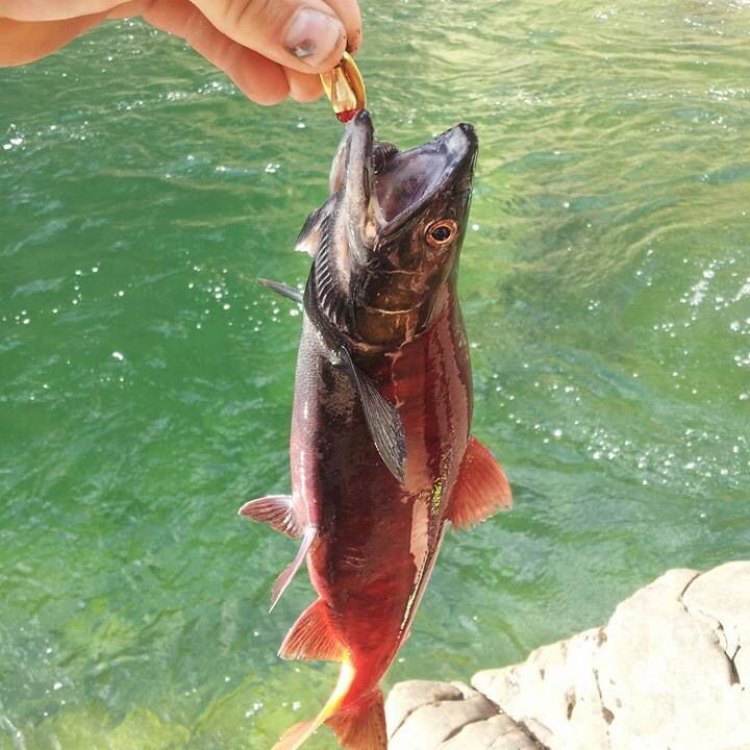
Kokanee Salmon: The Little-Known Beauty of North America's Freshwaters
Disclaimer: The content provided is for informational purposes only. We cannot guarantee the accuracy of the information on this page 100%. All information provided here may change without prior notice.

